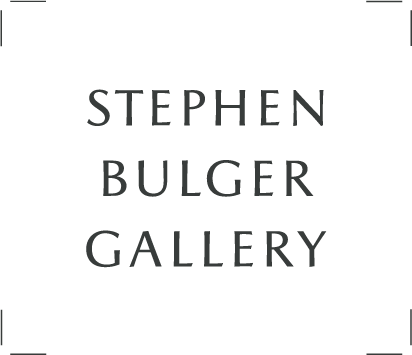Opening Reception and Book Signing: Saturday, November 24, 2-5pm
Guided Tour of the Exhibition with Dawoud Bey: Saturday, November 24, 3pm
Exhibition Dates: November 24 – December 22, 2018
Stephen Bulger Gallery is pleased to present “Places in History”, our first solo exhibition of work by Dawoud Bey, presented in conjunction with the release of his most recent monograph Seeing Deeply, published by University of Texas Press, 2018.
Dawoud Bey (born 1953) is an American photographer and educator renowned for his large-scale colour portraits of adolescents and other often marginalized subjects. This exhibition presents works from four distinct series. The earliest work is from “HARLEM USA”, a series that reconnected Bey with the neighbourhood where his parents first met, and where he visited the family as a child. Bey began photographing in the streets of Harlem in 1975 with a small format camera while reacquainting himself with the neighbourhood and engaging with the people he had glimpsed from the car window years before. Over a five year period, he eventually became a permanent fixture at public events taking place in the community, such as block parties, tent revival meetings, and anywhere else where people gathered. He experienced transformational relationships and exchanges with people he met, and it is in those relationships and the lives of the people that these pictures recall that the deeper meaning of these photographs can be found.
“The Birmingham Project” commemorates the tragic killing of six young African-Americans killed in Birmingham, Alabama on September 15, 1963. The bombing of the 16th Street Baptist Church killed four young African-American girls: Addie Mae Collins, aged fourteen, Denise McNair, aged eleven, Carole Robertson, aged fourteen, and Cynthia Wesley, aged fourteen. Several hours later, two young African-American boys: Johnny Robinson, aged sixteen, and Virgil Ware, aged thirteen, were shot and killed in related violent incidents. Receiving a commission from the Birmingham Museum of Art, Bey spent seven years of repeated trips to Birmingham in advance of beginning portrait sessions, using a large format view camera, over a five-month period in two locations: the original sanctuary of Bethel Baptist Church and the Birmingham Museum of Art. This series was first exhibited in 2013. The subjects of his diptychs are local community members who mirror the age of the youths at the time of their death, paired with adults who are the age these youths would have been if they were not killed. This project asks that we, the viewer, consider the past through the present.
Returning to his first subject after approximately 40 years, Bey stated “I returned to visualize Harlem in the midst of profound transformation. Due to increasing gentrification, demographic shifts are permanently altering the social and physical landscape, bringing both new amenities and population displacement, resulting in a radical reshapement of the built environment.” The large-scale colour photographs titled “Harlem Redux” include urban landscapes and subtle, yet poignant details of this changing environment.
His most recent series “Night Coming Tenderly, Black”, is a visual reimagining of the movement of fugitive slaves through the Cleveland and Hudson, Ohio landscape as they approached Lake Erie and the final passage to freedom in Canada via the Underground Railroad. Using both real and imagined sites these landscape photographs seek to recreate the spatial and sensory experiences of those moving furtively through the darkness.
These photographs are also a material conversation with the photographs of Roy DeCarava, in which the black subject often emerges out of the darkness of the photographic print; that material darkness here being a metaphor for an enveloping physical darkness, a passage to liberation that was a protective cover for the escaping African American slaves. A final touchstone for the work is the title, which references Langston Hughes’s poem Dream Variations, with its final refrain: Night coming tenderly/Black like me.
Dawoud Bey is the recipient of fellowships from the Guggenheim Foundation, the National Endowment for the Arts and is a 2017 recipient of a “Genius Grant” from the John D. and Catherine T. MacArthur Foundation. He holds a Master of Fine Arts degree from Yale University and is currently Distinguished College Artist and Professor of Art at Columbia College Chicago, where he has taught since 1998. Since 1979, his work has been exhibited and collected in many prestigious museums around the world, including Albright-Knox Art Gallery, Buffalo, NY; Amon Carter Museum of American Art, Fort Worth, TX; Art Institute of Chicago, Chicago, IL; Metropolitan Museum of Art, New York, NY; Museum of Fine Arts, Houston, TX; Museum of Modern Art, New York, NY; National Gallery of Art, Washington, DC; National Museum of African American History and Culture, Washington, DC; National Portrait Gallery, London; Nelson-Atkins Museum of Art, Kansas City, MO; Ryerson Image Centre, Toronto; San Francisco Museum of Modern Art, CA; Solomon R. Guggenheim Museum, New York, NY; Studio Museum in Harlem, New York, NY; and Whitney Museum of American Art, New York, NY, amongst many others. He is represented by Stephen Daiter Gallery in Chicago, and Rena Bransten Gallery in San Francisco.

